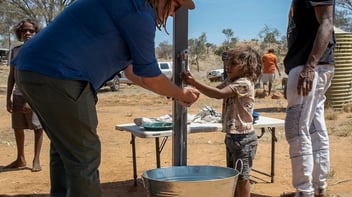New hydropanel technology providing water for remote communities
In a bid to address water supply challenges in remote Australian communities, a trial of novel ‘hydropanel’ technology is set to launch in Yuelamu, 300 km north-west of Alice Springs.
The hydropanels use solar power to collect water vapour from the air, which is mineralised by adding calcium and magnesium. The water is then placed into an ozonator before being piped to a tap or tank.
As part of the Central Desert Regional Council’s (CDRC) Hydropanel Water Project, Yuelamu received a delivery of 60 solar hydropanels last month, which are intended to provide local residents with clean drinking water.
CDRC CEO Diane Hood said that if the trials were successful, the panels could also be used in other remote communities.
“Central Desert Regional Council has been advocating for clean water for Yuelamu for a long time, so this is an exciting development and we hope the outcomes of this trial are positive,” she said.
“If sufficient water can be provided, this solution would be welcome in other communities in the region as well.”
The Hydropanel Water Project seeks to address Yuelamu’s ongoing water security issues; in 2016 its dam was infected with blue-green algae, with the entire community depending on one tap for drinking water.
While each household now has one drinking water tap each, Hood said Yuelamu’s water security was still threatened due to dwindling groundwater supplies, a common problem for communities in the region.
"[Water security] is a fairly wide problem across our desert communities, so that makes this sort of trial really worth doing," Hood told the ABC.
"If it works it's a different and a new solution that could really assist the communities."
The CDRC used a special purpose grant of about $120,000 from the Northern Territory Government to purchase the hydropanels, which are designed to produce 3 L of water per day, even in dry conditions.

